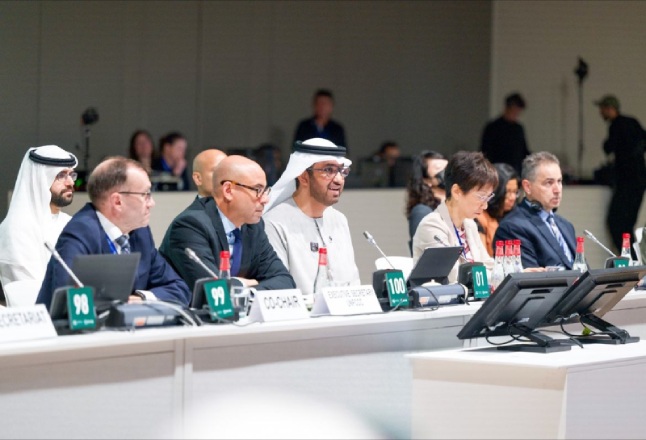If there is a will, there is always a way!
Andhra Pradesh CM Chandrababu Naidu, who is spearheading the development of the state’s planned capital city, Amaravati, is leaving no stone unturned to create a green, sustainable living space.
By doing so, Mr. Naidu is setting a benchmark for his peers in developing urban landscapes and built areas that are green, sustainable, and use green energy. With Amaravati, the Andhra CM is integrating the GREEN DNA in its citizens, essentially, the youth.
The air in Andhra Pradesh is thick with anticipation, a palpable buzz surrounding the ambitious undertaking that is Amaravati.
I am exhilarated as I learn more about the nuances of this ambitious project led by Chief Minister Chandrababu Naidu. He is architecting a green, intelligent, and sustainable urban ecosystem from what was formerly arid land. This surpasses simply creating a smart capital city.
Amaravati is not conceived in isolation; it draws inspiration and benchmarks itself against the world’s most successful and sustainable cities. As Prof. Jyothsna Tirunagari, National Spokesperson, TDP, notes, the emphasis on green spaces, aiming for an impressive 51% greenery cover, echoes the urban planning philosophies of cities like Amsterdam and Copenhagen, prioritizing liveability and ecological balance.
The master plan, crafted by renowned firms like Foster + Partners and Surbana Jurong, envisions a “green spine” reminiscent of New York’s Central Park, ensuring that nature is integral to the city’s core. The focus on clean mobility solutions, promoting cycling and electric public transport, aligns with global best practices in reducing carbon emissions and enhancing urban quality of life.
What lends immense credibility to this grand vision are the strategic international partnerships forged by the state government. The collaboration with global institutions like the World Bank and the Asian Development Bank transcends mere financial support. It brings invaluable global expertise, technical guidance, and a shared commitment to ensuring the project’s success. The World Bank’s emphasis on job creation, particularly for women and vulnerable communities, aligns perfectly with our vision of inclusive growth. Similarly, the ADB’s recognition of Amaravati as a potential replicable model for sustainable urban development on a global scale is a testament to its pioneering spirit.
The project has successful models of urban development financing seen in cities like Seoul and Curitiba. The integrated planning of themed cities—dedicated to governance, finance, and knowledge—reflects the holistic approach adopted by thriving metropolises like Shanghai’s Pudong.
The sheer scale of this endeavor—transforming 217 square kilometers into a futuristic haven powered entirely by renewable energy—is truly awe-inspiring. In a world grappling with the urgent realities of climate change, Amaravati’s commitment to integrating solar, wind, and hydropower is not just a progressive step; it is a bold declaration. For a region historically vulnerable to the impacts of a changing climate, this initiative embodies resilience and a proactive approach towards a greener future.
The blueprint for Amaravati reads like a roadmap to sustainable urban living. Imagine a city where rooftop solar panels are the norm, where buildings are designed with ecological consciousness, and where electric transport seamlessly connects its inhabitants. The ambition to source a minimum of 30% of the city’s energy from renewable sources is not a token gesture; it is a foundational principle underpinning the entire development. The planned district cooling system further underscores this commitment to energy efficiency and responsible resource management.
Of course, a project of this magnitude inevitably invites scrutiny and raises pertinent questions. Can we truly realize this ambitious vision? Can we seamlessly integrate sustainability with the demands of a thriving urban center? Can we address the challenges of urban poverty and inequality while simultaneously constructing this green utopia?
While definitive answers will unfold with time and dedicated effort, the track record of Chief Minister Chandrababu Naidu provides a strong foundation for optimism. His transformative leadership in turning Hyderabad into a thriving IT hub stands as a powerful testament to his vision, drive, and unwavering commitment to progress. The initial steps taken, such as the installation of solar panels in essential public facilities, demonstrate that this is not merely rhetoric but a tangible movement towards realizing the dream.












